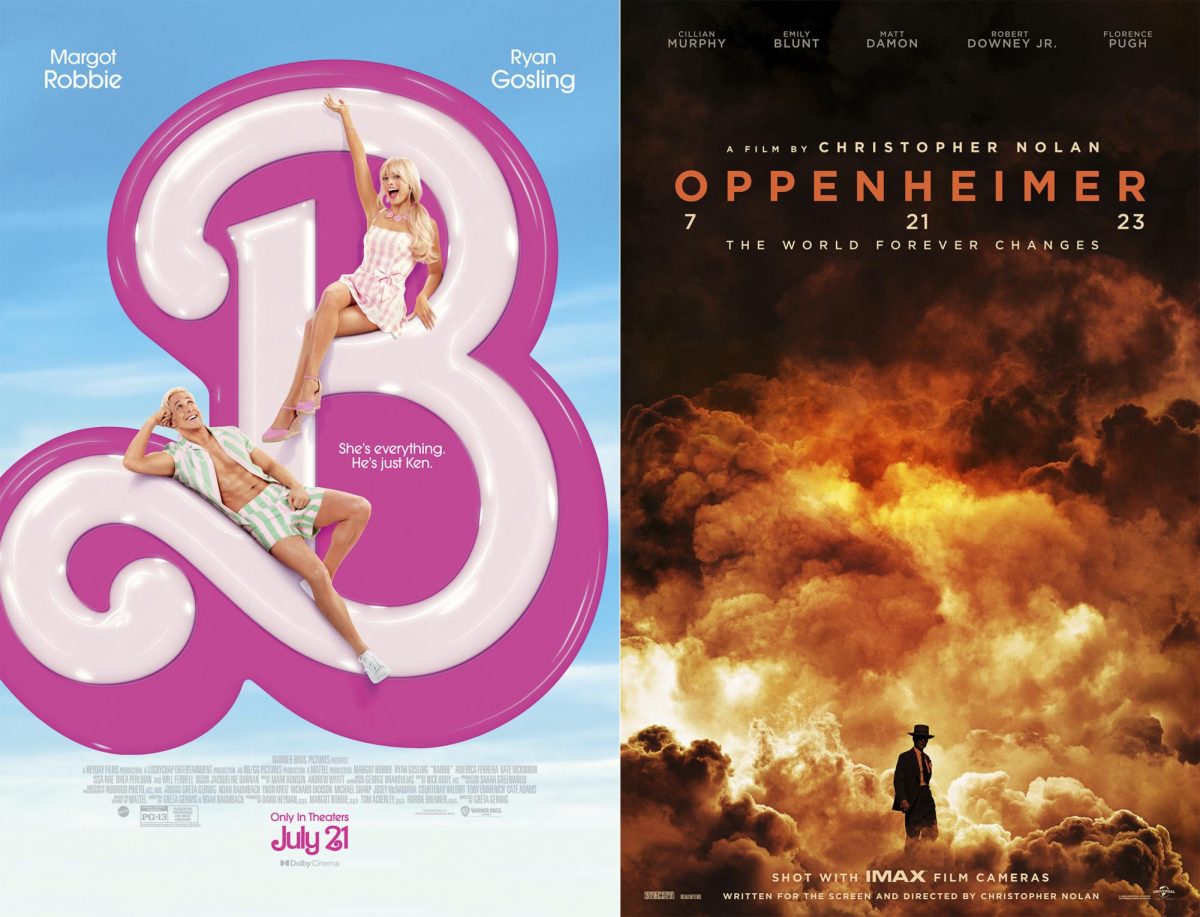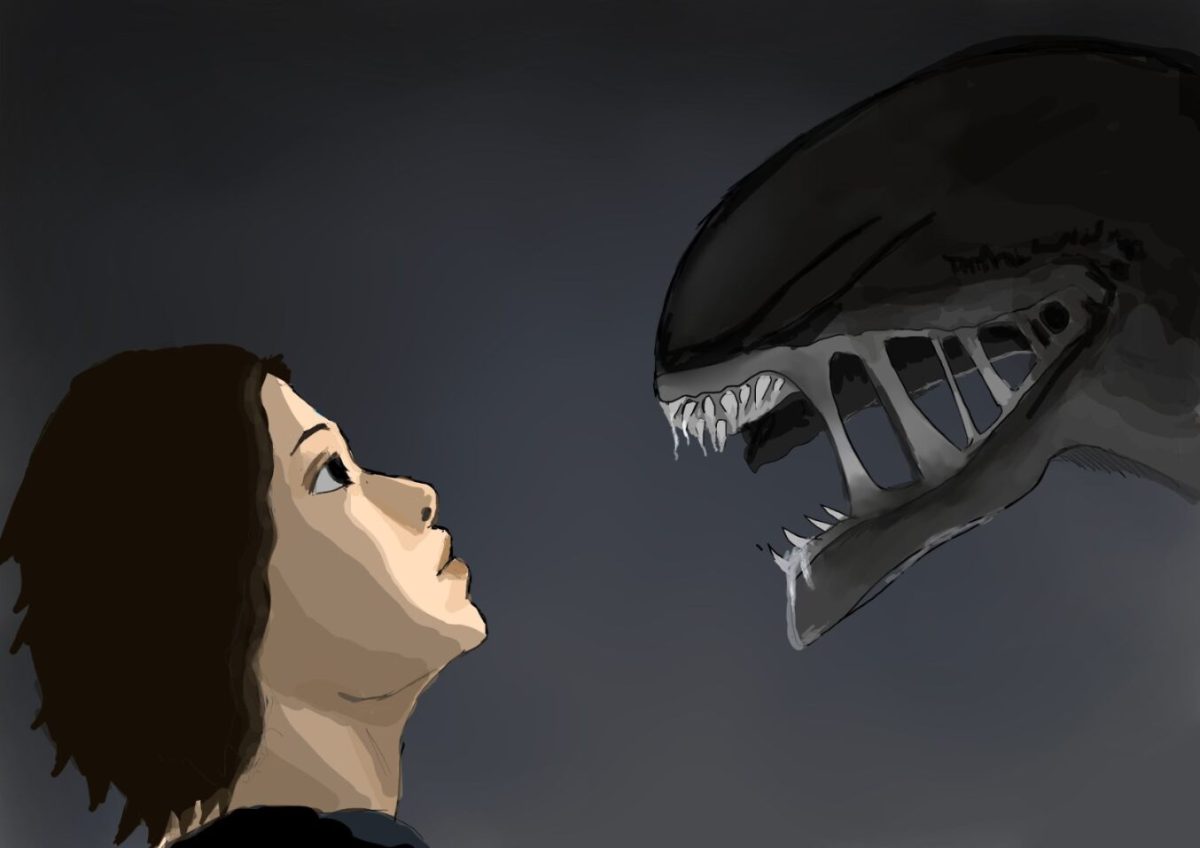Barbenheimer was undeniably the movie event of the summer. You could not look far without seeing some hot pink piece of marketing or a Cillian Murphy edit daunting your for you page. There were memes, tee-shirts, posters and videos all dedicated to this chance doubleheader.
In case you somehow missed this internet phenomenon, Barbenheimer was the term associated with the films “Barbie” and “Oppenheimer” which were released on the same day, July 21. Both films were highly anticipated and their simultaneous release date boosted the hype. These seemingly polar opposite films were the hot tickets of the summer movie season, many people even making the effort to see them on the same day, strapping themselves in for over five hours of cinema.
It’s worth mentioning that each of these films are stand-alone, original stories, which have become somewhat few and far between at the theater. “Barbie” and “Oppenheimer” being directed by visionary directors Greta Gerwig and Christopher Nolan respectively, each with a few award nominations under their belts certainly helps to draw in a crowd, but nothing compared to the numbers seen over the summer (and they continue to climb). “Barbie” has at this point surpassed one billion dollars worldwide making it the highest-grossing film directed by a woman, and ol’ Oppie made an astonishing $82,455,420 in its opening weekend, and has made nine times that amount since then.
Christopher Nolan, a favorite among the film bros, arguably brings us his strongest film to date. Nolan is known to create realistic science fiction films, all of which are grounded, but have a deep level of artifice. “Oppenheimer” still showcases the type of story Nolan likes to tell, but without the confusing plot holes, or theoretical pseudo-science to explain the paper-thin logic.
This time, less science fiction and more historical fiction with a science emphasis, “Oppenheimer” is a formally inventive and stylistically rich film. Nolan utilizes everything from switching from color to black and white, shifting aspect ratios, incredibly powerful sound design, non-parallel editing to tell the story in non chronological order and of course shooting on 70mm IMAX. Some may call this flashy and unnecessary, but inevitably it does all serve the narrative.
I won’t get into the nitty gritty history of it all, (though the film certainly does) but what I found to be more impactful was the moral turmoil that J. Robert Oppenheimer faced upon the creation of a weapon of mass destruction. The film really sings when we have moments of stillness with our lead that give us a chance to see the breadth of the moral consciousness. Oppenheimer grapples with his legacy and what will become of his relentless pursuit of scientific discovery.
As complex as “Oppenheimer” manages to be, “Barbie” is still more complex. It has more subject matter at hand with surface-level interpretations and deeper analysis’ plus a wide-ranging discourse around the film that alone is worthy of its own article. Greta Gerwig has only directed four films, but she has grown to be one of our most prolific female directors. Some of her other films including “Lady Bird” (2017) and “Little Woman” (2019) were hits among critics and audiences alike cementing her name into the public’s eye.
“Barbie” follows the logic of a kid’s playtime, but the sophistication of an in-depth feminist analysis. This collision makes for not only an entertaining film but one to be enjoyed by the masses, making these in-depth ideas about feminism and patriarchy accessible to all. “Barbie” is a movie made by women, about women and for women, something that we see so very little of today. It is such an honest representation of girlhood, growing up and living in a societal structure that rarely takes a woman’s side. Its themes and messages are direct and to the point leaving some viewers quick to dismiss all the film has to offer.
In addition to its powerful themes, “Barbie” is an outstanding achievement in production design. The pink Barbie Dreamhouse is carefully recreated in loving detail in life-sized form. Pools without water, a plastic wardrobe and pink cars all complete with sticker decals just like the ones you might have once plated with stir up fond memories.
Two films that are tone-wise the complete opposite, “Oppenheimer” with its bleak doomsday countdown, paired with “Barbie”’s bubble gum fantasy world somehow brought people together. There was no pink vs black debate, but rather a combined celebration of each. People wanted to see both films, often back to back. These movies proved that original stories can be successful, but more importantly it encouraged people to see films they might not typically see. Seeing both the bomb and the bombshell broadens perspectives and encourages critical conversations.














































